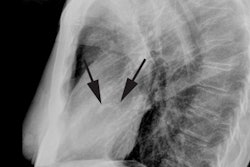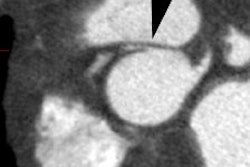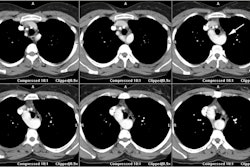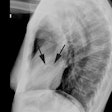AJR Am J Roentgenol 2000 Dec;175(6):1743-6
Sensitivity of two electron beam tomography protocols for the detection and
quantification of coronary artery calcium.
Callister T, Janowitz W, Raggi P.
OBJECTIVE: The purpose of this study was to compare the sensitivity of two
electron beam tomography protocols for detection and quantification of coronary
artery calcium. SUBJECTS AND METHODS: We selected 101 patients (57% men, mean
age 53 +/- 10 years) to undergo two consecutive electron beam tomography and
acquired imaging with both a 6-mm and a 3-mm slicing protocol. Three pixels
(area, 1.03 mm(2)) and a minimal density of 130 H were used for definition of
calcified plaque. RESULTS: We found coronary artery calcifications in 46
patients when we used a 6-mm protocol and in 61 patients when we used a 3-mm
protocol (p < 0.001). The average total calcium score was 77 (+/-140) with a
6-mm protocol and 251 (+/-395) with a 3-mm protocol (p < 0.005). The average
number of calcified lesions per patient was 1.7 for a 6-mm protocol and 3.7 for
a 3-mm protocol (p < 0.01). Of 179 individual lesions seen using a 3-mm
protocol, 103 (58%) were missed using a 6-mm protocol, and only 27% of the
lesions with a calcium score less than or equal to 40 seen with a 3-mm protocol
were detected with 6-mm slicing (p < 0.001). The mean lesion attenuation with
a 6-mm protocol was 160 (+/-42) H, compared with 218 (+/-44) H with a 3-mm
protocol (p < 0.001), indicating a significantly greater partial volume
averaging with the former protocol. CONCLUSION: A 6-mm slicing protocol is
significantly less sensitive than a 3-mm protocol for the detection and
quantification of coronary artery calcium. Since one third of coronary events
occur in patients with low calcium scores, a 6-mm protocol might be unreliable
for risk assessment because of substantial loss of information in this calcium
score range.






